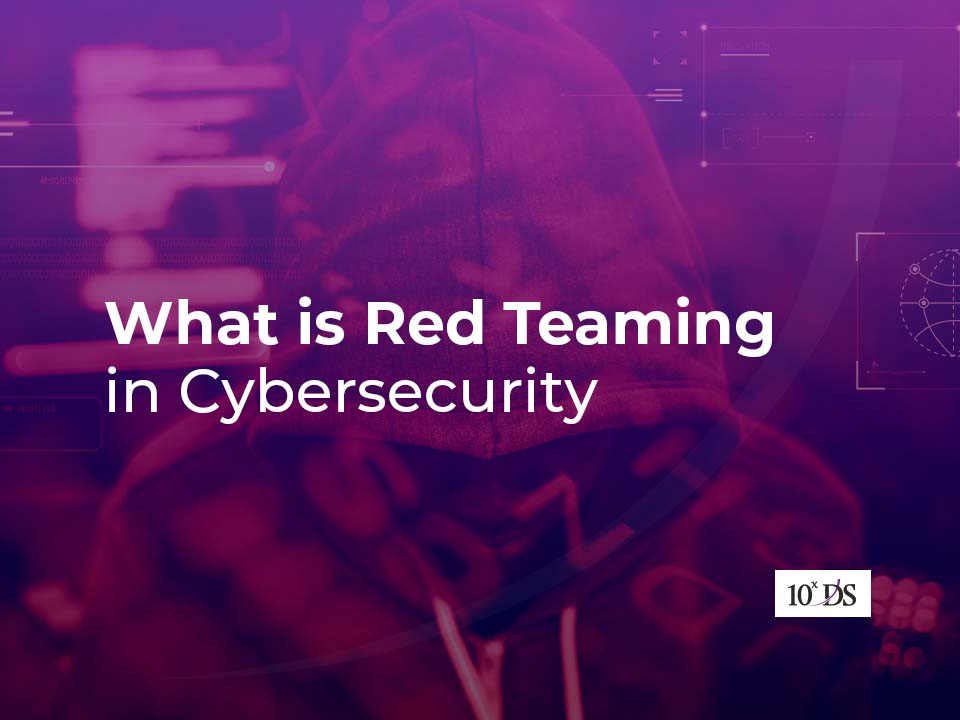
What is Red Teaming in Cybersecurity
Sometimes the good people have to pose as the bad guys, by adopting an adversarial approach challenging plans, policies, systems, models and assumptions. That’s a reference to the practice known as “Red Teaming” in information security. It is a methodology that involves a red team either a contracted external party or an internal group that uses strategies to encourage an outsider perspective. This approach helps organizations to identify and resolve shortcomings in their existing systems, defences, operational strategies, policies and more.
Red Teaming Methodology
Red teaming adopts a highly tactical and deliberate process to gain all necessary information. To bring in factors such as measurability and control of the procedure, there is an assessment that needs to be completed prior to a simulation. A red team assessment involves a goal-based adversarial activity, employing a holistic view of the organization from the perspective of an adversary. This tackles and caters to the needs of complex organizations handling different types of sensitive assets. The red teaming assessment aims at demonstrating real-life scenarios where malicious attackers can combine ostensibly unrelated exploits to meet their goals. Red teaming follows an in-depth approach to continuously improve the people, processes, and technology in an organization.
Red teaming methodology has its roots in the military, where the approach was used to realistically evaluate the strength and quality of strategies by leveraging an external or outsider perspective. However, today it has become quite common as a cybersecurity training exercise used by organizations in the public and private sectors. Red teaming has similar goals and perspectives as other testing methods such as penetration testing and ethical hacking, but there is much difference in their execution.
Common Red Team tactics
Red teaming goes deeper than penetration testing, uncovering risks to the organization. Let’s have a look at some of the most common methods applied by red team assessors:
1. Exploitation of Network Service
Sometimes even inaccessible networks can be accessed by exploiting unpatched or misconfigured network services allowing the attackers to gain sensitive information of an organization. Sophisticated attackers even leave a persistent back door to regain access in the future, making the system vulnerable to attacks.
2. Telephonic and Email-based social engineering
Attackers, with several types of attack methods in their arsenal rely on phishing emails to easily get to their goal. Because, just with a bit of research on individuals and organizations, they can send highly convincing phishing emails or make telephone calls to gain valuable information and access to the system.
3. Tailgating and Physical facility exploitation
This is probably one of the simplest, probably effective modes of gaining access to a secure facility. People generally tend to avoid confrontation, and an attacker can seek entry to a restricted area just by following someone through a door, most of the time controlled by electronic access control. An attacker can simply walk in behind a person who has legitimate access.
4. Application layer exploitation
Most attackers first target the web applications of an organization to get access. Some of the popular modes to gain access includes exploiting web application vulnerabilities such as cross-site scripting, SQL injection, cross-site request forgery, among others. This gives the attackers the necessary foothold to plan and execute more complex attacks.
Things to consider before having a Red Teaming Assessment
Red teaming assessments may cater to different types of organizational elements. However, the methodology has the same elements involved as a process, which includes reconnaissance, enumeration, and attack. Before starting the assessment, it is crucial to understand the concerns of the key stakeholders. This way, the assessment can cover these concerns. Here are some of the aspects to consider:
1. Serious reputational or revenue-based damage for an organization
For instance, if an attacker gains access to sensitive client data or cause a prolonged service downtime, the impact can result in reputational as well as revenue damage for the organization.
2. Common infrastructure used throughout the organization
It would be beneficial to understand the common infrastructure, hardware and software component, on which everything in the organization depends.
3. Most valuable assets
It’s necessary to identify what are the most valuable assets throughout the organization, including data and systems. It is also necessary to understand the repercussions if those assets are compromised.
Conclusion
Considering the ever-rising number of security breaches, organizations have become more focused and convinced on having a strong organizational security infrastructure in place. Red teaming plays a key role in this aspect, by evening the playing field between those malicious attackers and the security defence in an organization. No organization no matter the size is safe. Smaller organizations can be more vulnerable because of their lower level of defence. Red teaming offers flexibility, making it adaptable to almost any organization, as it focuses on the threats that are specific to a company or industry. Organizations should start adopting red teaming as a core security tool to prevent cyberattacks and secure critical assets.
Talk to our expert Cybersecurity and IT Risk Assurance team to learn more about Red Teaming and the different cybersecurity solutions you should implement for securing your business.


